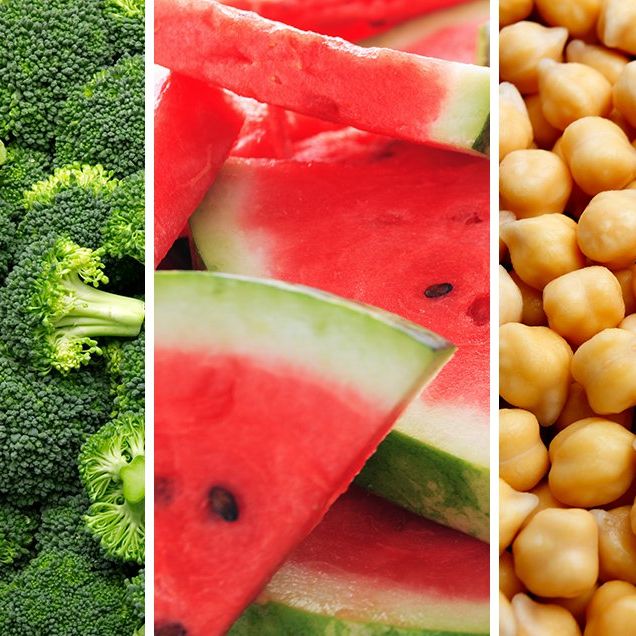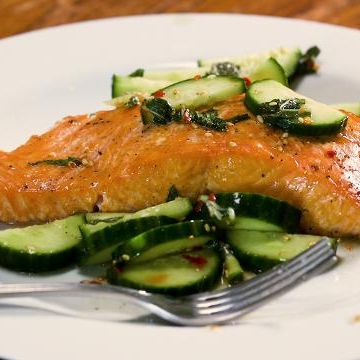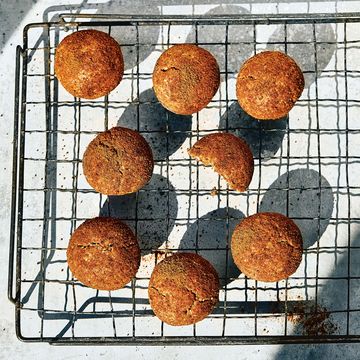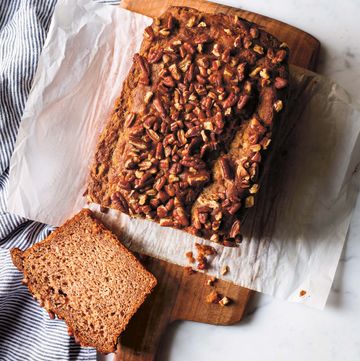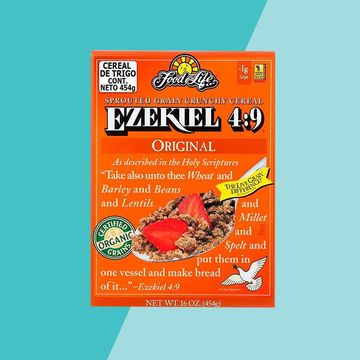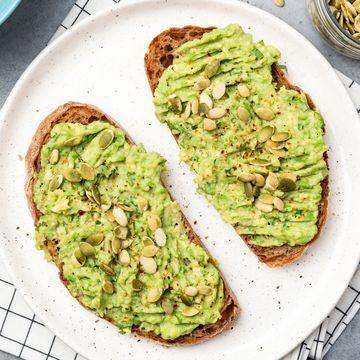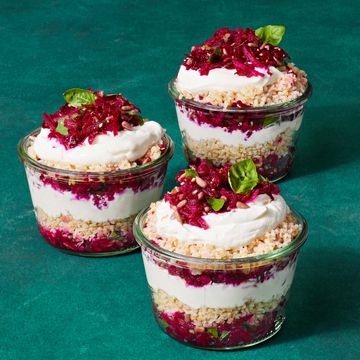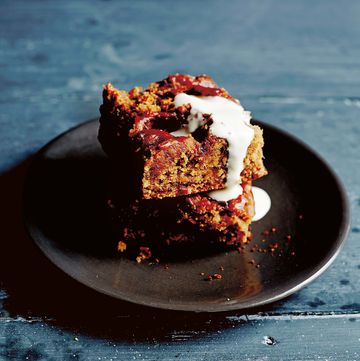It’s official: Low-carb diets are everywhere. From Keto to Paleo to good old Atkins and South Beach, chances are someone you know is cutting back their intake of bread and grains. But there are a lot of foods out there that are hidden sources of carbohydrates, such as legumes and some fruits, that might give people looking to cut their carb intake pause. If only there was some kind of low carbohydrate foods list to draw on...
Keep in mind when planning your low-carb menus (whether you're interested in trying to cut back on the processed stuff or trying out a ketogenic diet) that there’s a wide range for what’s considered low-carb, and no one-size-fits-all guideline for carb counts. “It’s important to remember that we’re all unique and what works for one person may not be appropriate for the next,” says registered dietitian Mary Ellen Phipps, owner of Milk & Honey Nutrition.
For her low-carb clients, Phipps might recommend anywhere between 30 to 80 grams of carbohydrates per day, depending on her client’s individual situation. That’s roughly 12-25 grams for breakfast, 20-30 grams for lunch, 15-25 grams for dinner, and 0-10 grams for snacks.
In general when calculating your carbohydrate intake, you should pay attention to net carbs—the amount that have an impact on blood sugar levels. Since fiber is technically considered a carbohydrate, it’s included in carb counts. You can calculate your net carbs simply by subtracting a food's fiber (and sugar alcohol count, if available on the label) from its total carbohydrate count. So if you're looking at a bagel that has 20 grams of carbohydrates and has four grams of fiber, its net carbs would be 16 grams.
“It’s important to consider the overall amount of foods you are eating. Keeping everything in balance, listening to your body, and knowing how to practice moderation can help people have a ‘healthy’ low carb experience,” says Phipps. If you do slash your carb intake, Phipps says you may experience symptoms of withdrawal since carbs are our body’s preferred source of fuel.
MORE: 3 Signs You Need To Start Eating More Carbs
Whether you’re considering switching up your diet or just want to include more low-carb options in your life, here’s your handy low carbohydrate foods list.
Salmon
Net Carbs: 0 grams
Salmon is a great source of lean protein, omega-3 fatty acids and B vitamins. No wonder it’s considered a superfood. According to the USDA, a three-ounce serving has zero carbohydrates.
Try this cedar plank salmon for dinner:
Tuna
Net Carbs: 0 grams
Tuna is another great source of lean protein, not to mention vitamins and minerals like vitamins A, B-12, D, and K as well as iron, calcium, and zinc. But it’s one of those fish you should eat it in moderation due to its mercury content, says Phipps. A can of light tuna has zero carbohydrates, according to the USDA.
Eggs
Net Carbs: 0.36 grams
Eggs are a good (and inexpensive!) source of high quality protein. It’s rich in B vitamins, vitamin D, selenium, and zinc. One large whole egg has about 0.36 grams of carbohydrates, per the USDA.
Tofu
Net Carbs: 0.6 grams
For the vegetarians and vegans, tofu is a protein staple that contains all the essential amino acids. It’s also a good source of vitamin B1, iron, calcium and copper. According to the USDA, a half-cup serving of firm tofu has 3.5 grams of carbohydrates and 2.9 grams of fiber.
MORE: 'I'm A Vegan Bodybuilder—Here's What I Eat In A Day'
Chicken
Net Carbs: 0 grams
Chicken is the poster child for lean protein. Plus, it’s packed with B vitamins and selenium. According to the USDA, half of a roasted boneless, skinless chicken breast has 0 grams of carbs.
(Find out how to stop the craving cycle before it starts and burn fat around the clock with the naturally sweet, salty, and satisfying meals in Eat Clean, Lose Weight & Love Every Bite.)
Bell pepper
Net Carbs: 2.7 grams
These colorful veggies are high in antioxidants like vitamin A and C. Plus, the high water content will help fill you up. Per the USDA, a medium red pepper has 7.2 grams of carbs and 2.5 grams of fiber.
Broccoli
Net Carbs: 3.6 grams
These mini trees supply more than 100 percent of your vitamin C and vitamin K daily needs. One cup of chopped raw broccoli has six grams of carbs and 2.4 grams of fiber, per the USDA.
Spinach
Net Carbs: 0.4 grams
There’s a good reason for eating your spinach. It’s a vitamin and mineral powerhouse, especially vitamins A and K, folate, magnesium and manganese. One cup of raw spinach has 1.1 grams of carbohydrates and 0.7 grams of fiber, according to the USDA.
MORE: 14 Vegetarian Foods That Have More Iron Than Meat
Asparagus
Net Carbs: 2.4 grams
Not only is asparagus low-carb, it’s a good source for vitamin K, folate, and vitamin A. One cup of raw asparagus has 5.2 grams of carbohydrates and 2.8 grams of fiber, according to the USDA.
Cauliflower
Net Carbs: 3.2 grams
There a reason that cauliflower is the poster child for low-carb diets. It’s also high in fiber, vitamin C, and vitamin K. Per the USDA, one cup of raw, chopped cauliflower has 5.3 grams of carbs and 2.1 grams of fiber.
Apricot
Net Carbs: 3.2 grams
These tiny, sunshine-filled fruits are not only sweet and tart, they’ll also give you a boost of vitamin A. One whole apricot has only 3.9 grams of carbohydrates, with 0.7 grams of fiber, according to the USDA.
Kiwi
Net Carbs: 8 grams
This tropical fruit meets your daily vitamin C needs and more than a third of your daily vitamin K needs too. One whole kiwi has 10.1 grams of carbohydrates and 2.1 grams of fiber, per the USDA.
MORE: What’s Worse For Your Bod: Sugar Or Salt?
Watermelon
Net Carbs: 10.9 grams
Contrary to popular belief, watermelon isn’t a sugar bomb. It is a good source for vitamins A and C, potassium, and magnesium. Per the USDA, one cup of diced watermelon has 11.5 grams of carbohydrates and 0.6 grams of fiber.
Cantaloupe
Net Carbs: 11.3 grams
This orange melon is sweet and gets you halfway to your daily requirement for vitamin A and vitamin C. One cup of diced cantaloupe has 12.7 grams of carbs and 1.4 grams of fiber, according to the USDA.
Peaches
Net Carbs: 12.1 grams
Peaches are a good course of vitamins E and K, niacin, folate, potassium, and copper. One medium peach has 14.3 grams of carbohydrates and 2.2 grams of fiber, per the USDA.
Chickpeas
Net Carbs: 10.9 grams
While chickpeas have a higher carb load like most other legumes, you can incorporate them into your low-carb diet by minding your portions. Plus, they are a good source of plant-based protein and fiber, which helps to slow down your digestion and keep you full longer. One half cup of canned, drained chickpeas has 16.2 grams of carbohydrates and a substantial 5.3 grams of fiber, according to the USDA.
MORE: Exactly What You Should Eat if You’re Trying to Lose Weight
Black Beans
Net Carbs: 11.6 grams
Black beans are full of fiber, protein, potassium, and a variety of good-for-you phytonutrients. Half a cup of canned black beans has 19.9 grams of carbs but 8.3 grams of fiber, per the USDA.
Avocado
Net Carbs: 0.8 grams
Avocados are a fantastic source of healthy fats and fiber. In one serving (one-third of a fruit) you'll get 10 percent of your daily value of folate and 15 percent of your daily value of vitamin B5. You'll also get 3.9 grams of carbs and 3.1 grams of fiber, according to the USDA.
Spaghetti Squash
Net Carbs: 7.8 grams
There’s a reason this low-cal veggie is a staple in low-carb diets. Plus, it’s rich in vitamin B6 and C, thiamin, niacin, and manganese. One cup of cooked spaghetti squash has 10 grams of carbohydrates and 2.2 grams of fiber, per the USDA.
MORE: Miley Cyrus' New Tattoo Makes A BOLD Statement About Her Diet
Zucchini
Net carbs: 4 grams
There's a reason why people love to use it as a replacement for wheat noodles. In addition to being packed with vitamin C, folate, and potassium, zucchini is also low in calories and carbs. One medium, raw zucchini has six grams of carbohydrates and two grams of fiber, per the USDA.
The article 20 Healthy Low-Carb Foods You Should Add To Your Shopping List originally appeared on Women’s Health.
